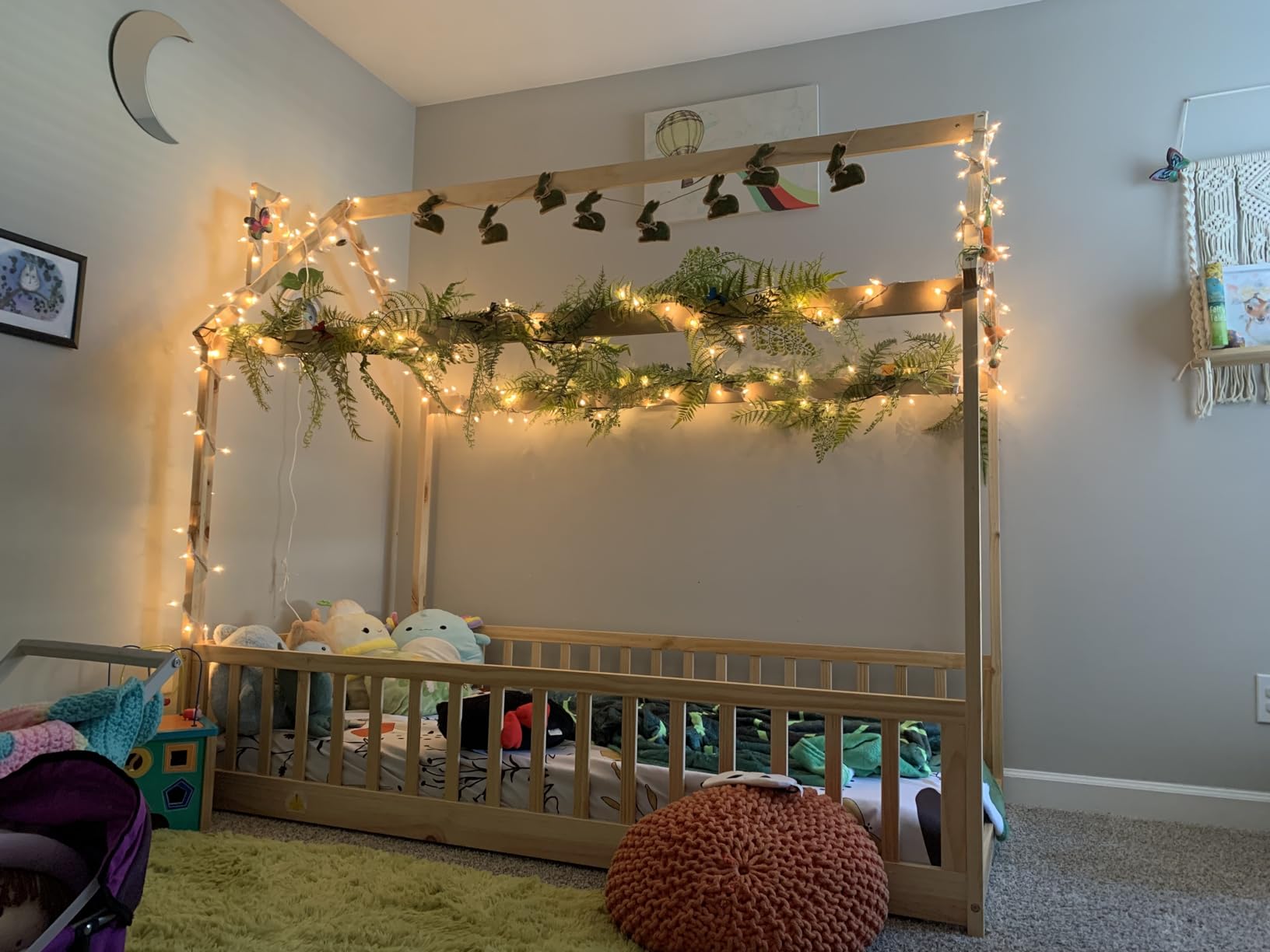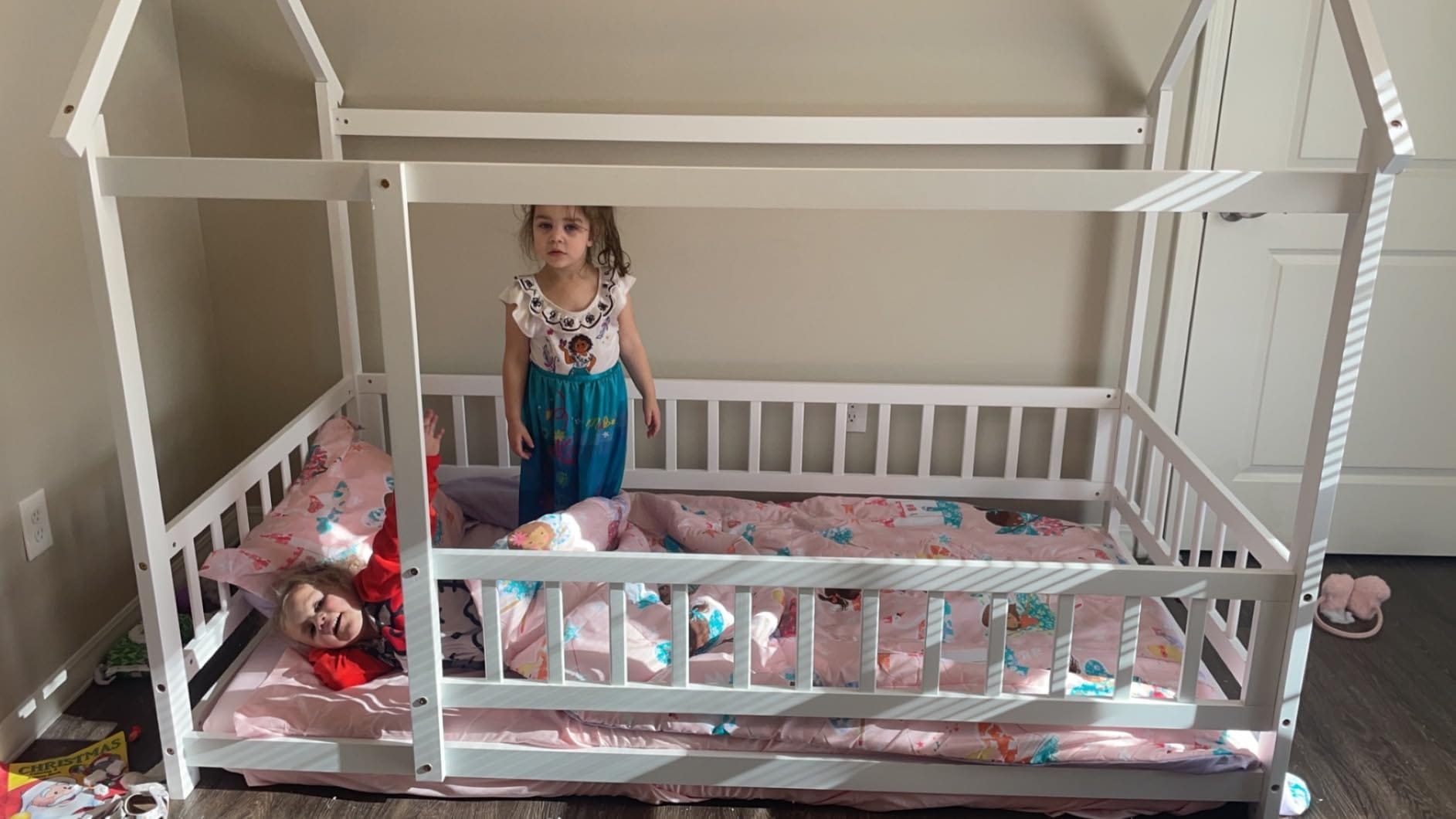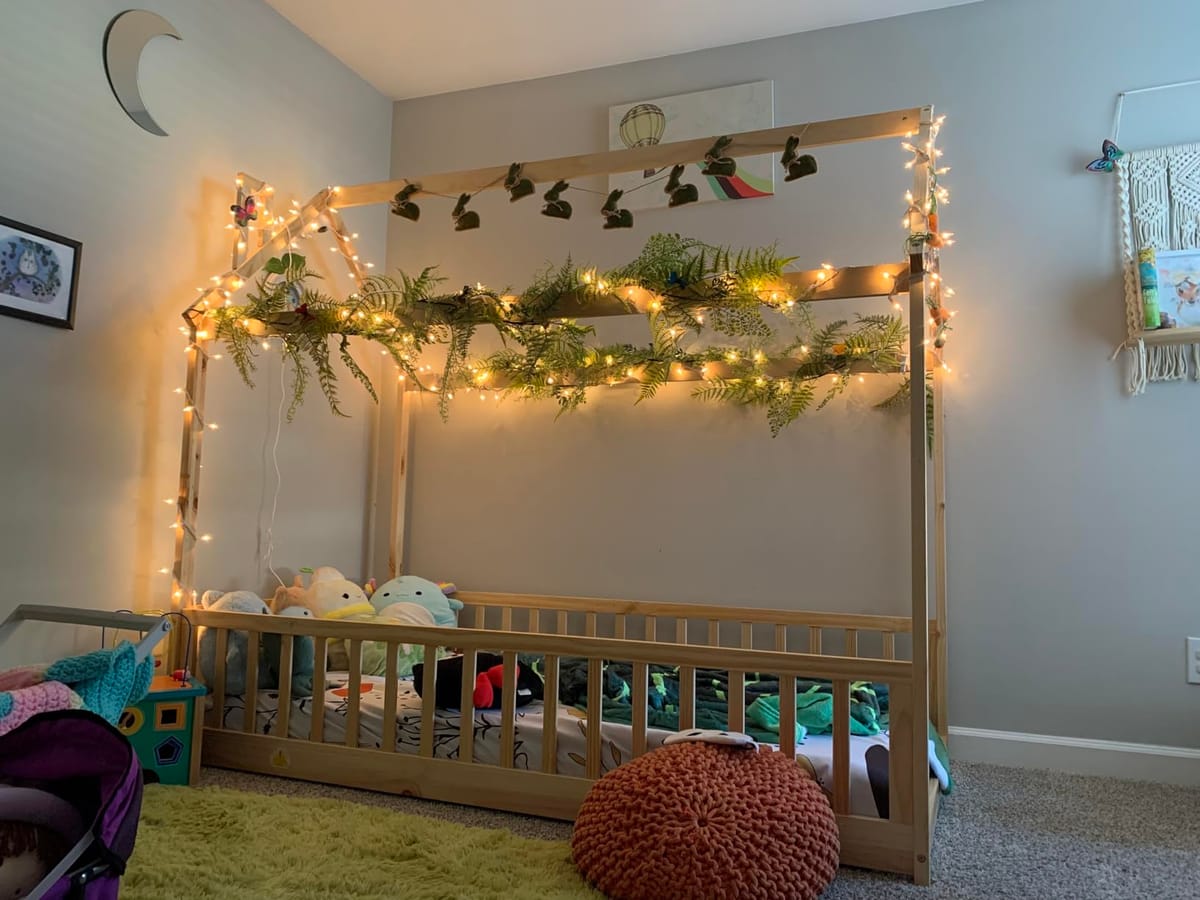Key Takeaways:
- Montessori floor beds promote independence and safety for toddlers transitioning from cribs.
- These beds are designed to suit the unique developmental needs of young children, fostering a comfortable sleeping environment.
- Choosing the right Montessori bed involves considering factors like size, material, and overall design to ensure it complements the child's bedroom.
Montessori floor beds have surged in popularity among modern parents who follow the Montessori method pioneered by Maria Montessori. These beds are not just a trendy piece of furniture; they are a fundamental part of a philosophy that encourages children to explore their environment and learn at their own pace. This article delves into what Montessori floor beds are, their benefits, and how to choose the right one for your child.
What is a Montessori Floor Bed?

A Montessori floor bed is essentially a bed frame or mattress placed directly on the floor or slightly elevated with bed slats, without traditional bed rails. This design is based on the Montessori principles of independence and accessibility, allowing children to get in and out of bed safely and freely. Unlike a standard toddler bed, which often comes with side rails, the Montessori floor bed is open on all sides, promoting not just freedom but also encouraging a child's mobility and decision-making skills.
Benefits of a Montessori Floor Bed
Parents find that transitioning their little ones from a crib to a Montessori floor bed offers numerous benefits. Firstly, these beds support the natural development of independence. Toddlers can climb in and out of bed without assistance, which fosters their autonomy and confidence. Secondly, the low height of the bed minimizes the risk of injuries from falls, which is a common concern with higher toddler beds. This setup also makes it super easy for parents to arrange the bedding and maintain the sleep space.
Safety Features
When it comes to safety, Montessori floor beds are designed with the well-being of the child in mind. The absence of high rails and the closeness to the ground reduce the worry of night-time tumbles. However, parents should ensure that the surrounding area is free of sharp objects and that the mattress is snugly fitted against the wall or in a corner to prevent the child from becoming trapped between the bed and the wall.
Material and Build Quality
The choice of material for a Montessori floor bed is crucial. Most beds are made from wood, which not only offers sturdiness but also complements the aesthetic of a child’s bedroom. The quality of the wood and the finish should be scrutinized to ensure there are no splinters or toxic paints used, as toddlers tend to explore their surroundings with all their senses, including taste.
Transitioning from Bassinet to Floor Bed
When the time comes to move your little one from the cozy confines of a bassinet to a more expansive sleeping arrangement, the Montessori floor bed is a stellar choice. This transition often marks a significant milestone in your child's development, allowing them more freedom and space to explore their capabilities. Parents often observe an increase in their child's independence as they learn to get in and out of bed on their own, which can be both thrilling and a bit nerve-wracking!
The process of transitioning can be smooth if approached thoughtfully. Start by placing the floor bed in the same room where the bassinet was to provide a sense of familiarity. Introduce the new bed during daytime naps to help your child get accustomed to the new sleeping environment. This gradual introduction helps weave the new sleeping arrangement into the fabric of your child's daily routine, making the transition almost seamless. Remember, patience is key as every child adapts at their own pace.
Integrating Montessori Beds into Your Child's Daily Routine



When your child sleeps in a Montessori floor bed, it's not just about catching Z's; it's about fostering independence from the moment they wake. Picture this: your little one opens their eyes, and instead of crying out for help, they safely explore their room. This autonomy can kickstart their day with a sense of accomplishment. Parents often notice an increase in their child's willingness to engage in solo playtime, which is a huge plus for busy mornings!
Moreover, integrating a Montessori bed into your child's bedroom supports a seamless daily routine. There's no mountain too high for your toddler to climb, literally and figuratively, as they can get in and out of bed without any help. This ease of access not only simplifies your life but also strengthens your motor skills. Imagine your daughter loves to arrange her stuffed animals each morning; a Montessori bed makes this possible without any fuss, setting a positive tone for the day.
Creative Ways to Personalize Montessori Floor Beds
Personalizing your child's Montessori bed can turn their bedroom into a wonderland that they adore. Sprout kids' imaginations by adding elements that resonate with their interests. For instance, if your son is a budding astronaut, consider space-themed sheets or a star projector for the ceiling. This personal touch makes the bed more than just a sleeping area—it becomes a launchpad for dreams.
Additionally, the simplicity of a Montessori floor bed is like a blank canvas waiting for a splash of creativity. You can hang airy canopies or fairy lights to create a magical ambiance that your child will love. These additions not only make the room visually appealing but also enhance the overall experience of using the bed. Every night, your child can drift off in a space that feels safe, cozy, and uniquely theirs, making bedtime something they look forward to.
Enhancing the Whole Room with a House Bed

Integrating a house bed into your child's bedroom transforms the entire space into an enchanting haven for your little one. Not only does it serve as a snug sleeping spot, but it also doubles as a magical play area that can spark your child's imagination. The unique structure of the house bed, with its sturdy frame and open design, invites creativity and play, turning a simple bedroom into a world of adventure.
Parents often find that the addition of a house bed elevates the overall aesthetic of the room while maximizing functionality. You can decorate the frame with lights, fabric, or even climbing plants to match the theme of the room. This not only makes the bed an integral part of the room’s decor but also ensures that your child feels excited about their personal space. Watching your daughter declare she loves her new bed as her castle or spaceship can be incredibly rewarding, as it reflects her happiness and comfort in her newly spruced-up bedroom.
Design Varieties: From Simple to House Beds
Montessori beds come in various designs, from simple, flat frames to more elaborate house-shaped frames that add a playful element to the child's bedroom. House beds, in particular, are a hit among toddlers as they double as a cozy nook during the day, perfect for reading or playing. This versatility makes the Montessori bed a valuable addition to any child's bedroom, adapting to their changing needs as they grow.
Choosing the Right Size
The size of the Montessori floor bed is another important consideration. While a twin size is common, some parents opt for a smaller toddler floor bed that better fits their child's current size. It's essential to balance the bed's dimensions with the available space in the room, ensuring there's enough room for play and storage. Additionally, checking the weight capacity of the bed frame ensures it can support your child as they grow.
Price and Longevity
Investing in a Montessori floor bed is often seen as a wise decision by many families due to its longevity. These beds can be used from infancy through to the big kid bed stage, making them a cost-effective option in the long run. While the initial price might be higher than a traditional crib or toddler bed, the extended use and benefits justify the cost for many parents.
Setting Up the Montessori Bed
Assembling a Montessori bed is typically straightforward, with many models designed to be easy to put together by the parents. It's important to follow all instructions and ensure all the parts are securely fastened to avoid any structural issues. Once assembled, the bed should be placed in a safe area of the room, away from potential hazards like windows or heaters.

Q: At what age is it suitable to transition a child to a Montessori floor bed?
A: Many parents start as early as 6 months when the child begins to roll and move more independently, but typically around 18-24 months is common.
Q: How do I ensure the Montessori floor bed is safe?
A: Ensure the mattress fits snugly within the frame, the bed is placed away from potential hazards, and the room is child-proofed to prevent accidents.
Q: Can Montessori beds be used for older children?
A: Absolutely! Many Montessori beds are designed to support a child well into their school years, especially those that accommodate a twin-size mattress.
Montessori floor beds are more than just a sleeping arrangement; they are a reflection of a thoughtful approach to parenting and child development. These beds promote independence, safety, and comfort, making them an ideal choice for parents looking to support their child's growth. By considering factors such as material, size, design, and safety features, parents can find the perfect bed to fit their child's needs and their family's lifestyle.










